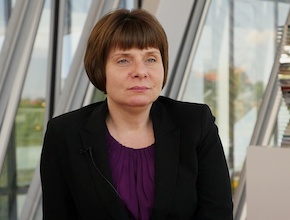What are the diagnostic criteria for subclinical hypothyroidism in pregnant women? Do they differ from the criteria used in the general population?
Leonard Wartofsky, MD: Subclinical hypothyroidism refers to the situation where all tests of thyroid function are normal, meaning within the reference range of the laboratory. So the thyroxine (T4) is normal, the total T4, free T4, free and total triiodothyronine (T3), etc. However, the thyroid-stimulating hormone (TSH) is slightly or more than slightly at the upper end of the reference range or higher. So again, with a reference range of 0.3 to perhaps 3.5 mIU/L such a patient would have normal T4 and T3 but a TSH of 4, 5, or 6 mIU/L; actually, [with a TSH] as high as 15 mIU/L one can see still normal levels of T4 and T3. But of course they are presumably not truly normal for this individual because of the sensitivity of what we call the thyrostat, the relationship between free T4 and pituitary TSH release. The pituitary is sensing slight reductions in free T4 still within the reference range as prompting release of TSH, and we are at a new steady state where a higher TSH is maintaining the free T4 within the reference range but it is not a truly normal situation. Reference range does not equate with normalcy necessarily.
What I just described is pretty much the general definition. To me it should be no different in pregnancy. In pregnancy we are very concerned about maintaining normal thyroid function for the health of the pregnancy and the fetus, so that recognizing that the TSH range will be slightly lower in pregnancy, the criteria would change a bit at the upper end of TSH. For example, in a newly diagnosed pregnant woman within the first trimester I would be concerned about any TSH higher than 2.5 or 3 mIU/L, which would prompt me to consider initiating low-dose thyroxine therapy.
 English
English
 Español
Español
 українська
українська










